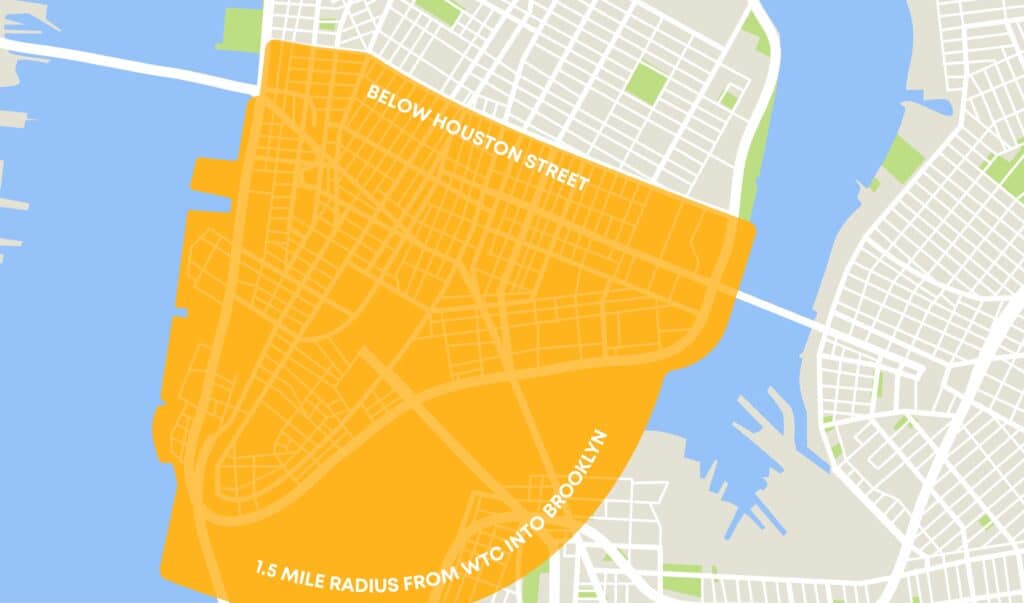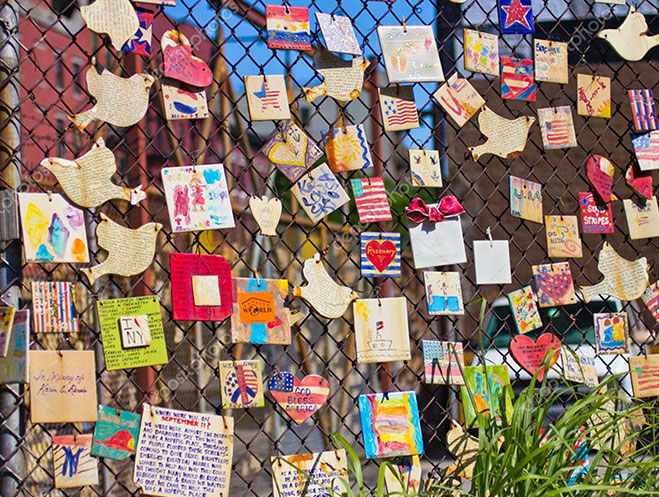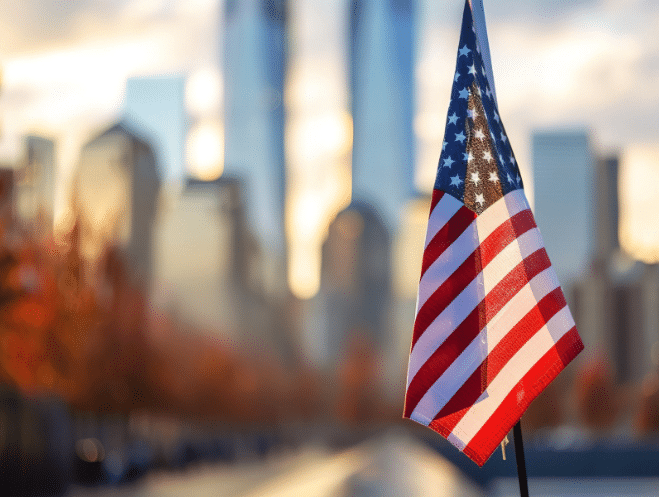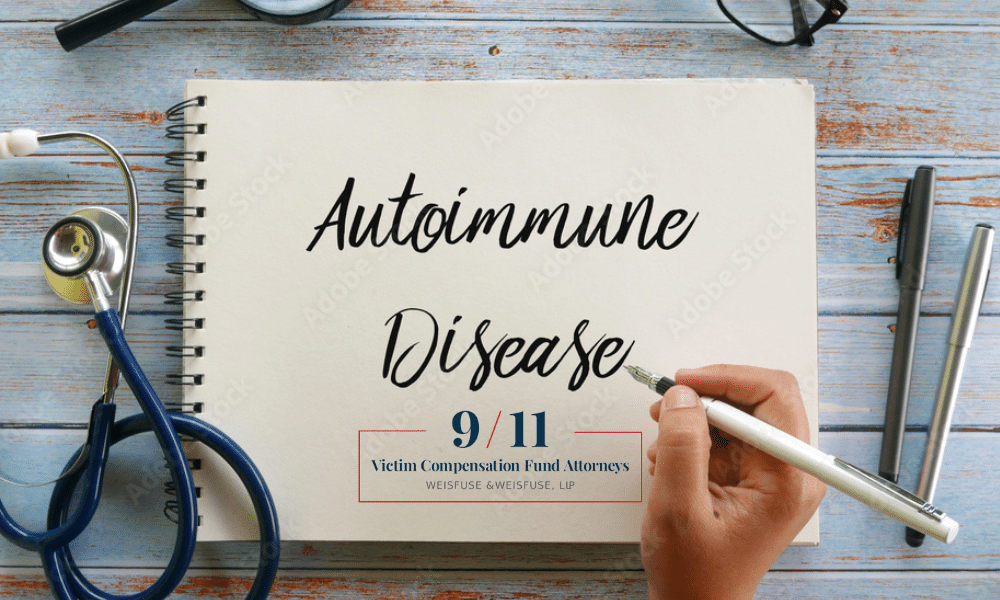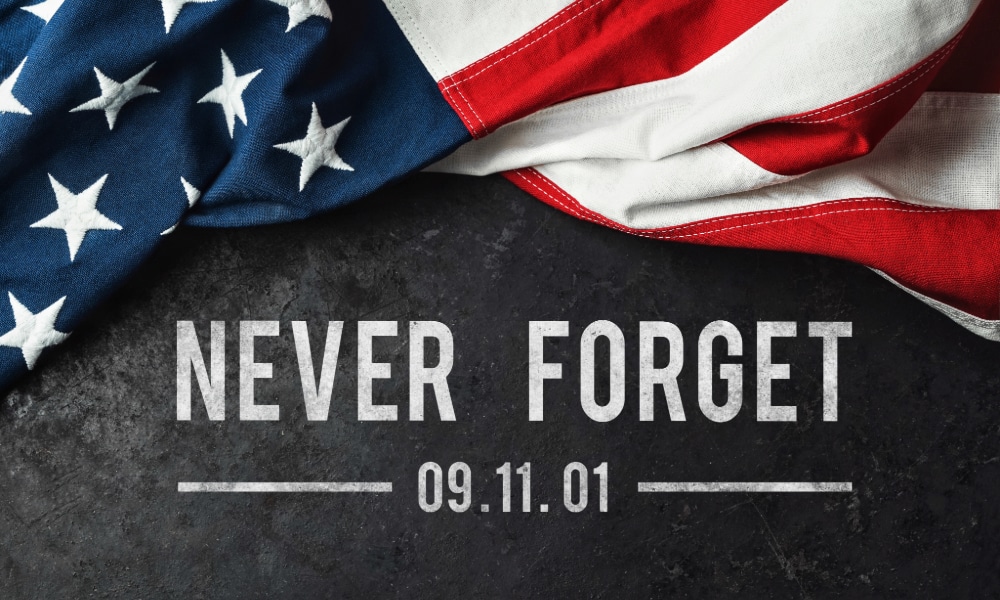
Step-by-Step Guide to the VCF & WTCHP Cancer Claim Process
According to the World Trade Center Health Program, nearly 25,000 enrollees have 9/11-related cancer caused by toxic dust. Those statistics, updated in September 2021, do not include the more than 1,600 who died from cancer. Additionally, some program members (enrollees) have more than one type of cancer. Since some types of cancer can take decades to develop, many more 9/11 victims may not yet know they have the disease.
The 9/11 Cancer Claim Fund is a great way for people with cancer who were affected by the events of September 11th, 2001 to receive compensation. In the Complete Guide to the 9/11 Cancer Claim Fund: Process and Payouts you’ll find all about how it works and what your chances are at getting paid.
Eligible survivors who have a cancer caused by 9/11 toxic dust exposure can make a claim for compensation from the September 11th Victim Compensation Fund (VCF).
What is the September 11th Victim Compensation Fund?
The September 11th Victim Compensation Fund is a fund set up to provide compensation for individuals who were present at the World Trade Center or New York City Exposure Zone on 9/11, The Pentagon zone and Shanksville, Pennsylvania at some point during September 11th, 2001 and May 2002.
Why was the September 11th Victim Compensation Fund Founded?
Within weeks of the attacks World Trade Center, the Pentagon, and the Flight 93 airliner crash in Shanksville, Pennsylvania, the United States Congress saw the need to ease the suffering of those who lost a family member, as well as victims who were injured or became ill as a result of the attack. VCF1, as the original fund was known, compensated 97 percent of those victims or victims’ families who applied for benefits.
After expiring in 2004, the fund was reopened in 2011 under the Zadroga Act with expanded eligibility and filing deadlines. In 2015, the Act was reauthorized with increased funding; nevertheless, it started running out of money. With increased pressure and growing needs, due in part to a rise in cancer claims, the September 11th Victim Compensation Fund became fully funded in 2019 as H.R. 1327 “Never Forget the Heroes: James Zadroga, Ray Pfeifer, and Luis Alvarez Permanent of the September 11th Victim Compensation Act.”
James Zadroga, an NYPD officer whose actions in the WTC rescue and recovery operations led to his fatal lung disease, was the first police officer whose death was attributed to his exposure to the toxic dust. Ray Pfeifer was an NYFD firefighter diagnosed with Stage 4 kidney cancer who died in 2017. Luis Alvarez of the NYPD may be best remembered for the speech he delivered to Congress, stating, “I’m going to make sure that you never forget to take care of the 9/11 responders.” He passed away from colorectal cancer in 2019.
In addition to ensuring funding to pay all eligible claims, the Never Forget the Heroes Act:
- Extends the claim filing deadline for September 11th Victim Compensation Fund claims to October 1, 2090
- Requires September 11th Victim Compensation Fund policies and procedures to be reassessed at least once every five years
- Requires claimants to be paid for the amount by which a claim was reduced on the basis of insufficient funding
- Removes the cap on non-economic damages in certain circumstances
- Periodically adjusts the annual limit on economic loss compensation for inflation
The fund reports that, as of the end of December 2021, September 11th Victim Compensation Fund payouts have totaled $9.32 billion to nearly 42,000 victims, including compensation to families of those who died.
Do I qualify for the September 11th Victim Compensation Fund?
Whether for a 9/11 cancer or another certified illness or injury related to the attacks, survivors must prove that they (or a deceased family member) were within one of the attack exposure zones during a specified timeframe. In many cases, this refers to those who became ill through exposure to the carcinogenic, highly toxic dust caused by the collapse of the World Trade Center.
To qualify for a September 11th Victim Compensation Fund payout, a victim (claimant) must have been in the exposure zone at some point between September 11, 2001, and May 30, 2002. The minimum amount of exposure for cancer to develop is four hours, or any length of time within the dust cloud.
The New York City Exposure Zone is the area where exposure to toxic dust likely posed the greatest danger. It is defined as “as the area in Manhattan south of the line that runs along Houston Street** from the Hudson River to the intersection of Canal Street and East Broadway, north on East Broadway to Clinton Street, and east on Clinton Street to the East River; and any area related to or along the routes of debris removal, such as barges and Fresh Kills landfill.”
What is a September 11th Victim Compensation Fund Award?
An approved claim for compensation from the September 11th Victim Compensation Fund is called an award; it is the amount paid to the victim (or the family of a deceased victim) once their eligibility has been positively determined. In addition to providing proof of presence in the NYC Exposure Zone, an eligible claimant must also have a 9/11-related cancer or medical condition certified by World Trade Center Health Program (WTC Health Program).
If you submitted a claim, you should receive a letter confirming receipt of the claims form. The process for determination of an award includes:
- The preliminary review to confirm receipt of all required documentation, including the Authorization for Release of Medical Records form, and other applicable information
- The substantive eligibility review to verify timely claim registration as well as confirmation of proof of presence, a certified and eligible 9/11-related condition, and (if applicable) resolution of any 9/11-related lawsuits
- Rendering an eligibility decision is the last step in the eligibility review process, and means that if approved, the claim will go for compensation review. If denied, the claimant gets a letter explaining the decision and outlining how to appeal the decision.
Once eligibility is approved, the types of loss are reviewed. Each award is calculated individually, and the payout is based on economic and non-economic loss, as well as any collateral “offsets” from insurance, pensions, Social Security, Worker’s Compensation, or proceeds from a lawsuit.
9/11 World Trade Center Health Program classification system
The World Trade Center Health Program is a federal program dedicated to providing medical monitoring and treatment to victims of the September 11 terrorist attacks. It is free of charge to eligible victims and offers benefits to both responders and survivors.
Responders include:
- Active or retired members of the NYPD or the Port Authority police who assisted in rescue, recovery, or cleanup activities, and related support workers
- Active or retired firefighters or emergency personnel of the FDNY
- Office of the Medical Examiner of NYC or other morgue workers involved in examination/handling of human remains
- Port Authority tunnel workers and vehicle maintenance workers who were exposed to debris “while retrieving, driving, cleaning, repairing, and maintaining vehicles contaminated by airborne toxins.”
Survivors include those who were “present in the New York City (NYC) Disaster Area in the dust or dust cloud on September 11, 2001; who worked, resided, or attended school, childcare, or adult daycare in the NYC Disaster Area from September 11, 2001, to July 31, 2002; who were eligible for certain residential grants or whose place of employment was eligible for certain grants following the September 11, 2001, attacks.”
While these are both eligible groups, there are some differences; for instance, responders receive annual monitoring exams, while screening-eligible survivors receive a one-time initial health evaluation. Survivors who have a certified 9/11 cancer or other medical condition are considered certified-eligible survivors and are eligible for annual monitoring exams and other benefits.
Types of cancer covered by the 9/11 Victim Compensation Fund
It was not until September 7, 2011, when several members of Congress filed a petition with the World Trade Center Health Program, that cancer was considered as a 9/11-related condition. The petition requested the Scientific/Technical Advisory Committee (STAC) “conduct an immediate review of new medical evidence showing increased cancer rates among firefighters who served at ground zero” and that the administrator “consider adding coverage for cancer under the Zadroga Act.” Cancer was finally added as a 9/11-related condition in 2012. This means that medically necessary cancer treatment is available for those eligible for 9/11-related cancer.
It must be noted that coverage depends on the latency period. As stated by the WTC Health Program: “Minimum latency requirements must be met for your cancer to be certified by the Program. In most cases, cancer does not develop until some time has passed after exposure to a cancer-causing agent. Latency is the amount of time that has passed between your initial 9/11 exposures and the date you were first diagnosed with cancer.”
Today, the WTC Health Program continues to add different types of cancer to its list of certified 9/11 diseases. Covered cancers include:
- Blood and lymphoid tissue (including lymphoma, myeloma, and leukemia)
- Breast cancer
- Childhood cancers (any type of cancer diagnosed in a victim under 20 years of age)
- Digestive system (including colon and rectum)
- Eye and orbit cancer
- Ovarian cancer
- Head and neck (oropharynx and tonsil)
- Prostate cancer
- Mesothelioma
- Lung Cancer
- Asthma & COPD
- Skin (melanoma, non-melanoma and carcinoma in situ)
- Soft and connective tissue
- Thyroid
- Urinary, kidney & bladder cancers
- Uterine cancer
In 2014, the World Trade Center added a number of rare cancers to its list of eligible conditions. These include (but are not limited to):
- Malignant neoplasms of the
- Adrenal and other endocrine glands
- Anus and anal canal
- Bone and articular cartilage
- Male breast cancer
- Gallbladder
- Meninges (layers of tissue that protect the brain and spinal cord), brain, spinal cord, cranial nerves
- Pancreas
- Penis/testes
- Placenta
- Small intestine
- Thymus
- Invasive cancer of the vulva, vagina, and cervix uteri
- Malignant neuroendocrine neoplasm (including carcinoid tumors
- Myeloid neoplasms
STAC is currently studying 9/11 uterine cancer and 9/11 liver cancer as additional diseases that should be covered under the WTC Health Program and for September 11th Victim Compensation Fund compensation.
Obtaining certification through the WTC Health Program
A first step in getting a September 11th Victim Compensation Fund payout is enrolling in the WTCHP. In addition to getting financial compensation through the September 11th Victim Compensation Fund, the Health Program may offer benefits services such as mammograms and screening for cervical, colon, and lung cancer. Additionally, certified enrollees are entitled to free, medically necessary treatment.
To enroll in the World Trade Center Health Program, applicants must complete and sign the application form, include all required documentation, and return it to the WTCHP by mail or fax (this can also be done using their online system).
Enrollment is not the same as certification. In order to be certified, an applicant must have proof of presence in the Exposure Zone between September 11, 2001, and May 30, 2002, and have an eligible 9/11-related medical condition.
Registering and submitting documentation for World Trade Center cancer payouts
WTC Health Program payouts for cancer or other certified 9/11 medical condition are done through the September 11th Victim Compensation Fund. Applicants can register with the September 11th Victim Compensation Fund before filing a claim to “to alert the September 11th Victim Compensation Fund” that the applicant may be a potential claimant.
It is not necessary to have been diagnosed with cancer or other illness to register with the September 11th Victim Compensation Fund. However, registration deadlines are not the same for everybody: the deadline is determined by the type of claim and individual circumstances.
The actual claim for 9/11 personal injury must be filed within two years of notification that a physical condition is 9/11-related. Typically, the notification will come from the World Trade Center Health Program.
There are two categories of September 11th Victim Compensation Fund awards payouts:
Non-economic loss
Non-economic loss refers to pain and suffering caused by the cancer or other eligible illness, including “physical and emotional pain, suffering, inconvenience, physical impairment, mental anguish, disfigurement, loss of enjoyment of life, loss of society and companionship, loss of consortium (other than loss of domestic service), among others.”
Economic loss
Economic loss is awarded primarily for loss of income and benefits, but also for out-of-pocket medical costs and replacement services loss. Loss of income may be compensated to age 65 in cases where the victim is completely debilitated.
When making a claim, it is important to be complete, accurate and timely; and to include all required documentation in order to speed the compensation process.
Contact Weisfuse & Weisfuse LLP today
If you are suffering from a 9/11 cancer, it is critical to make your claim as soon as possible. Our lawyers at Weisfuse & Weisfuse, LLP have compassion, knowledge, and experience helping 9/11 victims like you. We guide you through the registration and claims process to ensure the best possible compensation. To discuss your situation and needs, please call us at 212-983-3000 or contact us online to schedule a free and confidential consultation.
** Numerous advertisements and media outlets are informing New Yorkers about their possible eligibility for 9/11 benefits if they were in Lower Manhattan during the attacks and suffer from health conditions due to toxic dust exposure. At Weisfuse & Weisfuse LLP, we emphasize that the “exposure zone” isn’t limited to Canal Street but can extend further to Houston Street.

About Jason Weisfuse –
9/11 Victim Compensation Fund Attorney
About Jason Weisfuse –
9/11 Victim Compensation Fund Attorney
Jason E. Weisfuse is a seasoned 9/11 cancer attorney and managing partner at Weisfuse & Weisfuse, LLP, a New York City-based law firm dedicated to representing individuals affected by the September 11th attacks. Since the establishment of the September 11th Victim Compensation Fund (VCF), Jason has been instrumental in assisting first responders, survivors, and families in securing the compensation and medical benefits they deserve.
With a Juris Doctor from New York Law School (2009), Jason brings extensive experience regarding the 9/11 Victim Compensation Fund to his practice. His deep understanding of the VCF and the World Trade Center Health Program (WTCHP) has enabled him to navigate complex claims processes effectively, resulting in substantial awards for his clients.
Jason’s commitment to the victims in the 9/11 community is evident through his active involvement in professional organizations such as the New York State Trial Lawyers Association and the American Association for Justice. He has also contributed to legal discourse with publications in the New York Law Journal, reflecting his dedication to legal excellence and advocacy.
At Weisfuse & Weisfuse, LLP, Jason continues to provide compassionate and knowledgeable representation, ensuring that those affected by 9/11 receive the support and compensation they are entitled to.


